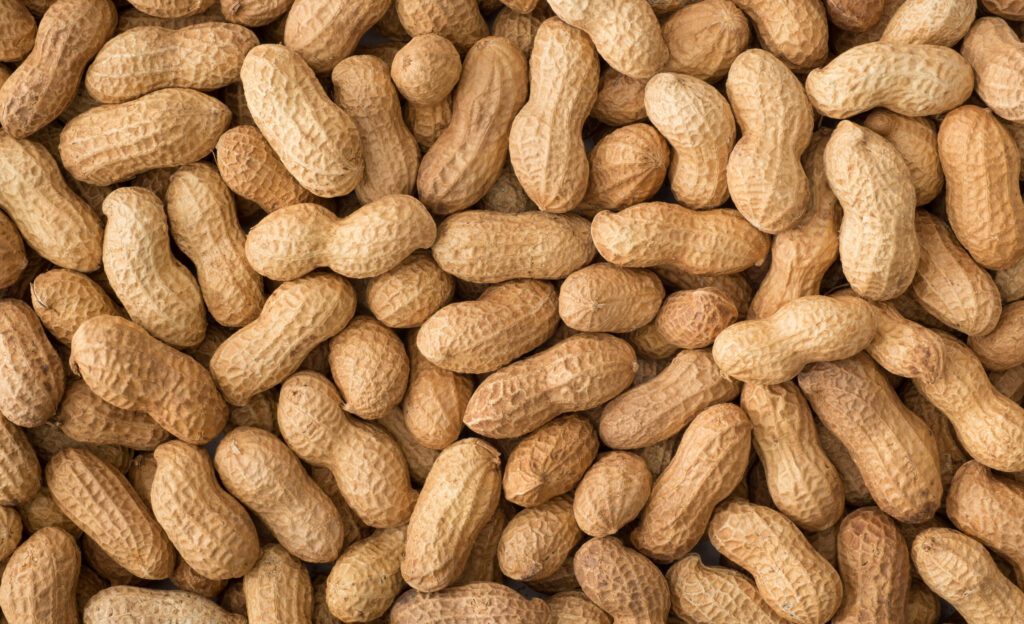Florida Climate Perfect for Peanuts
by ERIKA ALDRICH
Sponsored by Farm Credit of Central Florida
Peanuts are a favorite snack for most, whether they are roasted, in the shell, used in candy, made into peanut butter or peanut oil, or in some other manner. According to the Florida Peanut Producers Association (FPPA), each American consumes more than six pounds of peanut products a year! Florida is one of the top peanut-producing states in the country as peanuts grow well in the warm weather and Florida’s sandy, droughty soils.
The History of Peanuts
Peanuts, a legume rather than a true nut, are native to South America, likely originating in Peru or Brazil. European explorers took them back to Europe, where the crop spread to Asia and Africa. According to the FPPA, Africans brought peanuts to North America in the 1700s. Commercial production started in the 1800s, but it wasn’t until the early 1900s that peanuts rose in popularity, thanks to improved mechanisms for the planting, growing, harvesting, and shelling of peanuts.
There are four major types of peanuts grown in the U.S.: Runner, Virginia, Spanish and Valencia. In Florida, runner varieties are the dominant variety, as is the case in most of the Southeast. They are used mainly for the production of peanut butter. The FPPA maintains that runner varieties are valued for their “attractive kernel size range.”
Peanut Production in Florida
Florida usually ranks fourth in the country for peanut production, along with other states in the Southeast. The Florida Department of Agriculture and Consumer Services listed a total production value for peanuts in 2017 at $154 million; that accounted for 9 percent of the total value of the U.S. peanut market.
In the USDA’s NASS 2020 State Agriculture Overview for Florida for 2020, The Sunshine State planted 175,000 acres of peanuts, harvested 165,000 acres, and produced 561 million pounds of peanuts. That year’s harvest was worth $113.8 million dollars in value of production.
The University of Florida IFAS Extension’s Electronic Data Information Source (EDIS) publication on the crop maintains that peanuts are mainly grown in North and Central Florida, with counties in the panhandle having the highest production, but that peanut production occurs all over the state. According to EDIS, the state averages about 170,000 acres of peanuts, with both 2017 and 2018 seeing 195,000 acres growing peanuts. Peanuts are typically grown in a rotation with other crops, such as corn, cotton and grass crops.
The state has the longest ongoing peanut breeding program in the U.S., with notable contributions being the release of many peanut varieties, the breeding of the runner peanut variety “Florunner,” and that the “Florida germplasm is in the parentage of the most commonly grown varieties today,” according to EDIS.
Peanut’s Potential as a Biofuel
EDIS also shares the potential peanuts have for use as a biofuel. Peanuts have a high oil content, around 45 percent 52 percent, compared with other oilseed crops used to make biodiesel. According to EDIS, peanuts could produce more than 150 gallons of fuel per acre, though it could likely be higher if peanuts were bred and selected for biofuel production.
Since peanuts grow well in Florida’s sandy soils and they require few direct fertilization inputs, the biofuel market is potentially an attractive one for Florida growers. With so many peanut varieties offering several potential breeding lines, the EDIS publication maintains there very well may be one that was not suitable for the edible market but that is suitable as biofuel crop.


